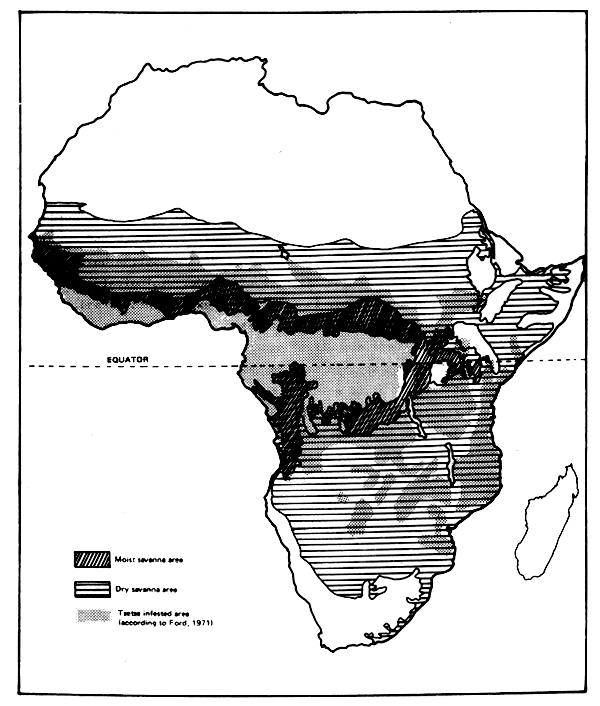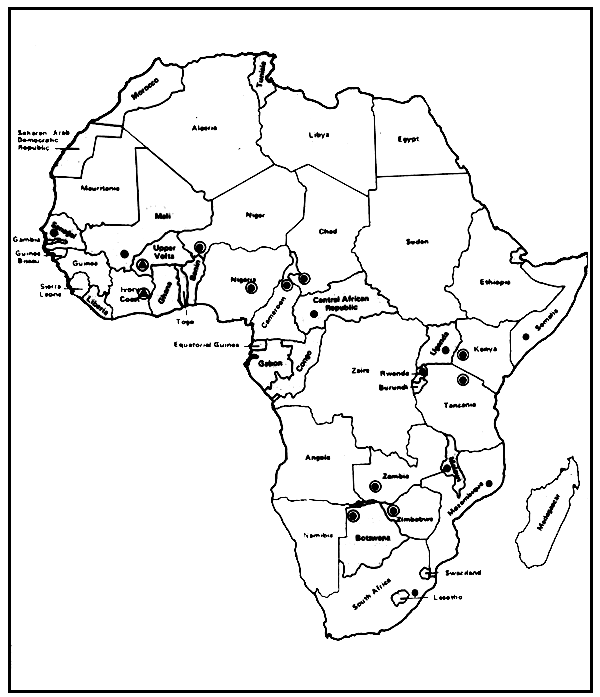Tsetse flies (Glossina spp.), represented by many species in Africa south of the Sahara (see fig. 2.1.), are well known for their role as vectors of human and animal trypanosomiasis. Control of the disease can be achieved either by drug treatment of the host or by eliminating the vector. In relation to the latter, efforts are made in many African countries to exterminate tsetse flies. At present large-scale control operations are planned in 33 African countries under the auspices of FAO and WHO programmes. Various methods of tsetse control have been applied sofar, including, among others, bush clearing, destruction of larger game and biological and chemical control (e.g. see Nash, 1969, Jordan, 1974 and Laird, 1977). Due to various factors, e.g. limited efficacy and serious environmental impact, both bush clearing and game animal destruction have gradually become obsolete in the course of the last decade. Biological control, viz. the release of sterile male flies, is still in an experimental stage. Some promising results were obtained in field trials (e.g. Cuisance et al. 1978, Dame and Williamson, 1979). Chemical control has become more and more important and at present insecticides are applied on a large scale in most tsetse control programmes. The present report deals mainly with the impact of chemical control and eradication. The report will provide the following information (1) The present state of knowledge on the range and nature of chemical control and eradication in Africa, (2) The present state of knowledge on the environmental impact of the chemicals used, (3) Some remarks on secondary effects of tsetse control operations, (4) Recommendations for monitoring and minimizing the environmental impact of tsetse control operations.

Fig. 2.1. Map showing relationship between tsetse distribution and moist and dry savanna areas

Fig. 2.2. Tsetse control activities in Africa
• tsetse control campaign
 tsetse control research project
tsetse control research project
O environmental studies included